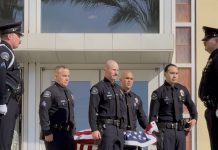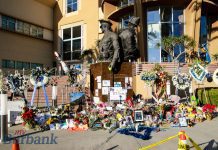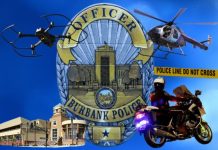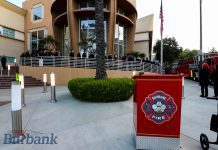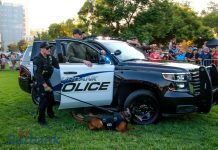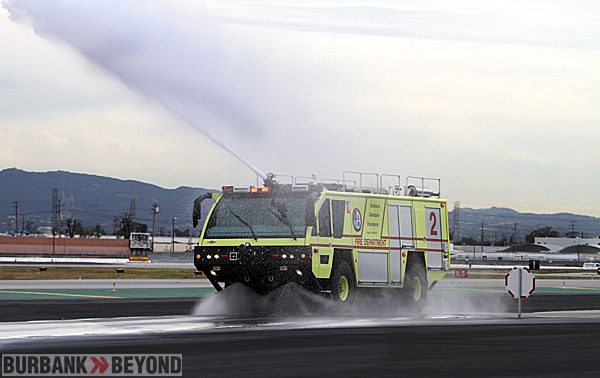

You are in seat 23D on Ridge Air Flight 4357 approaching Burbank Airport. The captain makes an announcement that one of the wing landing gears has not fully locked, and the aircraft will need to land with the gear raised. No big problem, as the crew trains for this situation “all the time.”
The passengers, while anxious, have full confidence the aircrew, airport operations, and fire department are fully prepared for any event. As the aircraft does a circle around the airport, you notice a lot of red flashing lights approaching the runway, and you know the airport fire department is ready for your landing.
According to Fire Captain Marcus Domingo of the Bob Hope (Burbank) Airport Fire Department (BHAFD), the BHAFD’s rescue and firefighting resources “greatly exceed what you would normally expect to see at an airport this size,” and that resource is now further reinforced with the rollout of BHAFD’s newest firefighting tool, the ARFF Panther 1500.
Built by Rosenbauer, the BHAFD’s Panther 1500 was introduced to the public Monday morning. The new crash rig provides Bob Hope Airport with the latest in compressed air foam (CAF) technologies, providing fire fighters far greater control in dynamically managing the mixtures of foam, water, and other compounds used in quickly smothering and extinguishing fuel fires.
Combining the ability to deploy the most advanced fire fighting compounds, with additional tools such as forward looking infrared (FLIR) and thermal imaging cameras (TICs), fire fighters employing

the Panther 1500 are able to more rapidly assess and identify the best possible response to nearly any emergency situation. This enhanced firefighting capability can be delivered to any point within the airport property in 3 minutes or less following notification of an emergency.
The Panther 1500 employs an advanced cab, allowing the operator to manage nearly all facets of the truck’s capability, including operating foam and water turrets, adjusting foam and chemical mixtures, visibility into the FLIR, and charging lines. “It is like playing a video game” continued Capt Domingo. “The cab operator basically manages everything with a joystick, and the firefighters are free to concentrate on approaching the fire” and rescuing passengers.
“Burbank is the first airport in the US to operate a Class 4 ARFF (aircraft rescue and fire fighting designation) vehicle employing the CAF system” said Capt Domingo. “Although several other area airports, including LAX, are in the process of acquiring the same type vehicle.”
In fact, the LAX fire department recently sent a large number of firefighters to Burbank Airport for a day of familiarization with the Panther 1500, walking away with great anticipation of receiving their own. According to Capt Domingo, LAX will soon receive six of the crash rigs.
The Bob Hope Airport Authority “takes pride in backing public safety agencies supporting the airport” noted Capt Domingo. “Whether it is the police department or fire department, they (airport authority) provide us with the best possible equipment to safely handle the traveling passenger. They really care about the safety of our passengers.”
Capt Domingo acknowledges other airports around the world have professional, courageous firefighters and emergency responders committed to protecting passengers during accidents or other safety events. However “having access to this type equipment increases our ability to save lives” if a crash or accident occurs.
Passengers departing and arriving to Bob Hope Airport will likely never meet an airport fireman, however all will have confidence the combination of a motivated fire department, using the best possible firefighting and rescue equipment, will ensure their safety is the highest priority, and help is available on a moment’s notice.
The Bob Hope Airport Fire Department employs 3 shifts of 6 firefighters per shift on a 2 day on, 4 day off schedule. The airport has cooperative agreements with the Burbank City Fire Department, as well as Los Angeles City Fire in the event of a larger scale emergency.
In addition to providing emergency services, the BHAFD also supports the airport AED program, fire extinguisher inspections and training, as well as inspections and emergency support for all airport structures.










